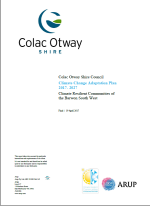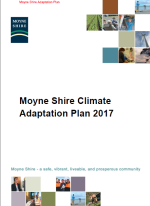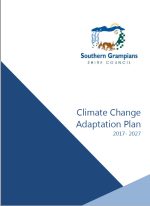Adaptation Plans
The development of Climate Adaptation Plans for the Councils was identified as a high priority project from Phase One.
ARUP and Loop were engaged to deliver this project, was which commenced in early 2016 and was completed in 2017. This project was delivered through the following stages:
- Stage 1: Project Establishment - During this phase timelines and engagement program were finalised.
- Stage 2: Contextualisation – Identified key impacts and issues related to climate change in its context. This included an assessment of councils’ progress on climate change adaptation. This helped to understand the local context of each council; understanding how the council is talking about climate change, and how they are responding.
- Stage 3: Risk Assessment – Each council developed municipal risks from a social, economic and environmental perspective. Councils then conducted a risk assessment based on criteria of Likelihood verses Consequence.
- Stage 4: Adaptation Planning. In this process, each Council identified adaptation actions to address the high priority climate risks. Each action was then scoped in detail to identity how the actions was to be delivered (e.g. responsible officer, timing, resourcing etc.).
- Stage 5: Project Close Out – This is where we collected evaluation information about the success of the project, and to share learnings from the project and compliment the capacity building that has occurred within the region already. It also delivered the concise Climate Adaptation Planning - Regional Report, which provided a summary of common climate risks across the region.
Through this process, each Council generated their own Climate Adaptation Plan to provide a strategic direction to address the challenges of a changing climate. Attached is the Colac Otway Shire Climate Adaptation Plan as an example of the plans developed.
It is important to note that two Councils (City of Greater Geelong and the Borough of Queenscliff) already had Climate Adaptation Plans in place. Through this project, we were able to provide them with funding to assist with the delivery of these plans. This City of Greater Geelong used this funding to progress the construction of an offshore reef to assist with coastal erosion and inundation risks. The Borough of Queenscliff invested in shade sails and drinking fountains at one of their public reserves, to make the space more resilient to future heat wave events.












